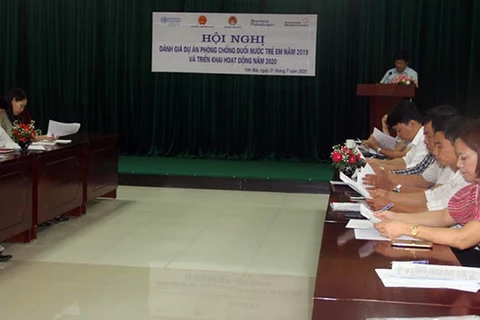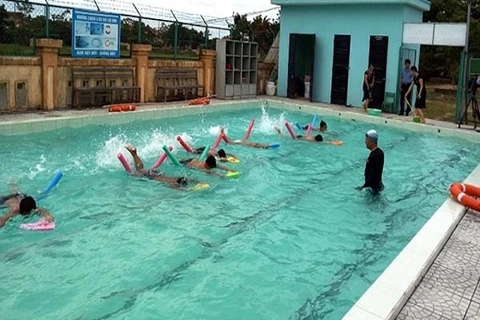
Hanoi (VNS/VNA) - Dozens of journalists from various media agencies joined a training workshop to improve communication skills to help prevent child drowning.
Addressing the opening ceremony, in Hanoi on October 8, Dang Hoa Nam, Director of the Department of Children Affairs under the Ministry of Labour, Invalids and Social Affairs stressed: "Through the training programme, the organising board hopes that the press and media agencies will join in more strongly, helping society and the community understand the true nature of the current situation of child drowning prevention and control."
He added there should be in-depth articles to help raise awareness of the responsibility of families, communities, levels and sectors in contributing to reducing child drowning numbers.
The director said the numbers of children dying from drowning has been falling, however, the number of deaths is still high. The risk of drowning is highest when children play in rivers, lakes, ponds or beaches, including water areas in construction sites or water tanks.
"Therefore, we need to further promote communication on drowning prevention solutions for children such as teaching swimming and water safety skills. In addition, communication is not only about sympathetic stories, but also about how to get everyone to act together to avoid repeating sad stories about drowning like in the recent years," Nam added.
Within the framework of the training programme, reporters were informed of the current status of injury prevention and drowning prevention for children.
Technical Officer of the World Health Organisation (WHO) in Vietnam, Duong Khanh Van, gave out background statistics about the importance of injury prevention and drowning prevention for children. Drowning is one of the top 10 causes of death in the 1-24 age group, men are twice as likely to drown as women, over 90% of drowning deaths occur in low and middle-income countries and drowning is the cause of over 2.5 million preventable deaths in the past decade.
"Drowning does not happen randomly,” she said. “Drowning is a public health problem that can be predicted and prevented.”
Doan Thi Thu Huyen, the Country Director in Vietnam, of the Global Health Advocacy Incubator, under the Campaign for Tobacco-Free Kids, offered up six drowning prevention interventions which could be applied in Vietnam.
They included building fences to control children's access to water sources, keeping pre-school children away from open water, teaching children of primary school age and above swimming skills and water safety skills and training people in rescue and first aid.
Since 2017, the agency has implemented a drowning prevention programme for children in 15 provinces and cities. As many as 44,398 children aged 6-15 have learned safe swimming, 52,250 children aged 6-15 have learned safety skills and 30,204 parents, caregivers and preschool teachers were instructed on child drowning prevention.
Former Director of the Centre for Journalism Training, Dinh Thi Thuy Hang, under the Vietnam Journalists Association, emphasised a number of communication goals on preventing and combating child accidents and injuries for authorities at all levels, communities, parents, caregivers and children, as stated in the Government's Child Accident and Injury Prevention Programme.
At the workshop, journalists shared experiences in Vietnam and internationally, working collectively to develop ideas, messaging and communication stories for articles on drowning prevention for children./.






















